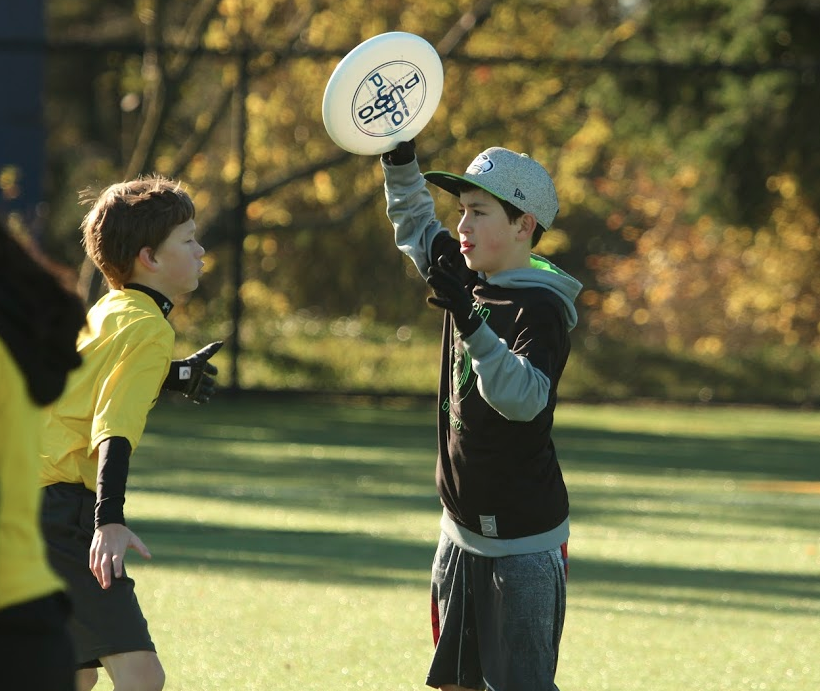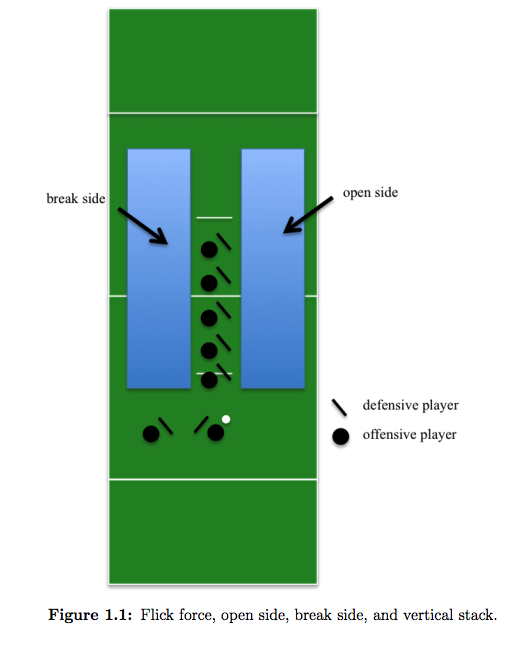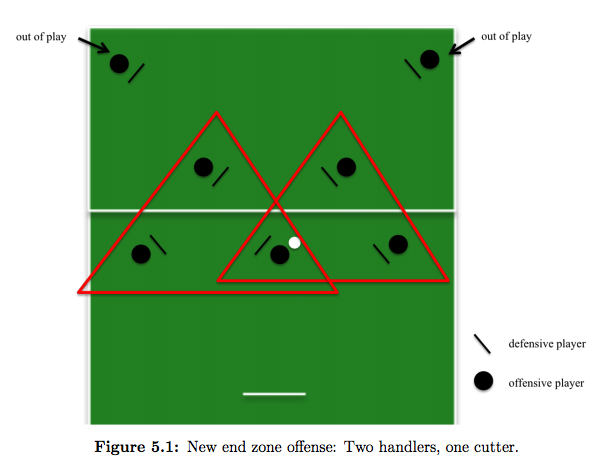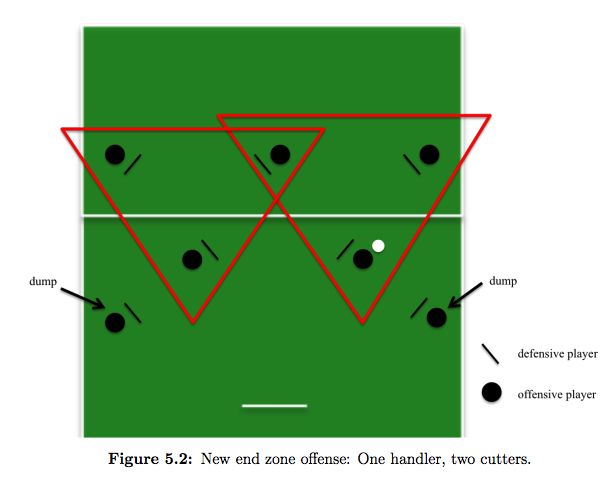As a youth coach, what should you say when an elementary or middle school player asks you to teach them the “hammer” throw? The normal response is to tell them they should first master the backhand and forehand throws. But I’m starting to wonder: if our goal is creative players, maybe kids should get a chance to choose what throws work best for them to accomplish a particular pass or play…

Why not have 80+ throws from which to choose?!
Consider the enduring wisdom in the favorite cheer of my daughter’s coach, Denny: “Hammers win games!!”
Not long ago, I followed that dictum in one of my favorite moments as a club player for Che. I had never thrown a hammer in a league game before, but faced with an intense forehand force on the sideline, I suddenly saw an opportunity in the far corner of the end zone. (Thanks for being tall, Rebecca!) What an awesome feeling of satisfaction to watch that hammer drop down to my teammate… The receiver — that a moment before had seemed unreachable because of the tough mark that was shutting down my standard throws (forehand and backhand) — caught the throw and we won!
In the hope that more players — especially young ones — can feel that creative bliss, here are 80 different ultimate throws from Rowan McDonnell —
And here’s a “table of contents” for Rowan’s video…
- Two-handed backhand (0:27)
- Forehand (0:34)
- Two hand forehand (0:37)
- Barbacue (0:40)
- Around backhand (0:43)
- Gym class hero (0:49)
- Thumber (0:53)
- Hammer (1:00)
- Scoober (1:07)
- Airbounce backhand (1:13)
- Bootstrap (1:17)
- Airbounce forehand (1:23)
- Airbounce thumber (1:29)
- HRFABB (1:34)
- Beckham (1:37)
- Rapinoe (1:46)
- Push pass (1:50)
- Sky hook (1:57)
- Two hand sky hook (2:05)
- Briefcase (2:09)
- Two hand push pass (2:15)
- Prayer (2:19)
- Mortal Kombat (2:24)
- Knuckleball (2:32)
- Behind the back push pass (2:37)
- Jump shot (2:43)
- Behind the back pizza (2:45)
- Pizza pie (2:52)
- Smukie (3:01)
- Scroogie (3:04)
- Chicken wing (3:11) [footage blacked out!]
- Two hand bootstrap (3:13)
- Twirler (3:17)
- Spinerama (3:24)
- Windmill windup (3:30)
- Bixler (3:42) [in game!]
- Seabiscuit (3:47)
- El primo (3:52) *
- Matador (4:00)
- Conquistador (4:10)
- Rebel (4:18)
- Corker (4:24)
- Haxi maxi (4:32)
- Shovel (4:37)
- Waffle fries (4:43) *
- Helicopter (4:48)
- Double backhand (4:58) *
- Backhand scoober (5:06)
- Dragon (5:12) *
- Elevator forehand (5:19)
- Elevator backhand (5:28)
- Slingshot (5:38)
- Slingshot blade (5:42)
- Slingshot scoober (5:47)
- Yuba (5:50)
- Maxi haxi (6:00)
- Palm springs (6:05)
- Bounce pass (6:20)
- Thumbixler (6:26)
- Spin cycle (6:33)
- Spin wheel (6:44)
- Home run (6:53) *
- Body roll (7:00)
- Stu (7:09)
- Dough boy (7:12)
- Chain lightning (7:19)
- The Timmy (7:27)
- Change up backhand (7:34)
- Change up forehand (7:40)
- Heel pass (7:47)
- Kick pass (7:51)
- Wheeler (7:56) *
- Shot put (8:00)
- Cricket (8:04) **
- Chicken head (8:09)
- Fireball (8:12)
- Toe flick (8:14) [in game!]
- Behind the back flick (8:19) [in game!]
So… since he skipped 76 (accidentally) maybe that’s 78 throws? Except he’s sneaky and counted the “flick” with which he started the video (at 0:25), so 79! Maybe *you* should make up #80, or teach Rowan one that he didn’t include?!
Finally, below is a list of all of Rowan’s throws, plus an ever-growing list of a bunch more. For many throws there are also links to tutorials so you can break each down and learn it. Feel free to add your own throws via the comments, and we’ll incorporate them into the big list.






